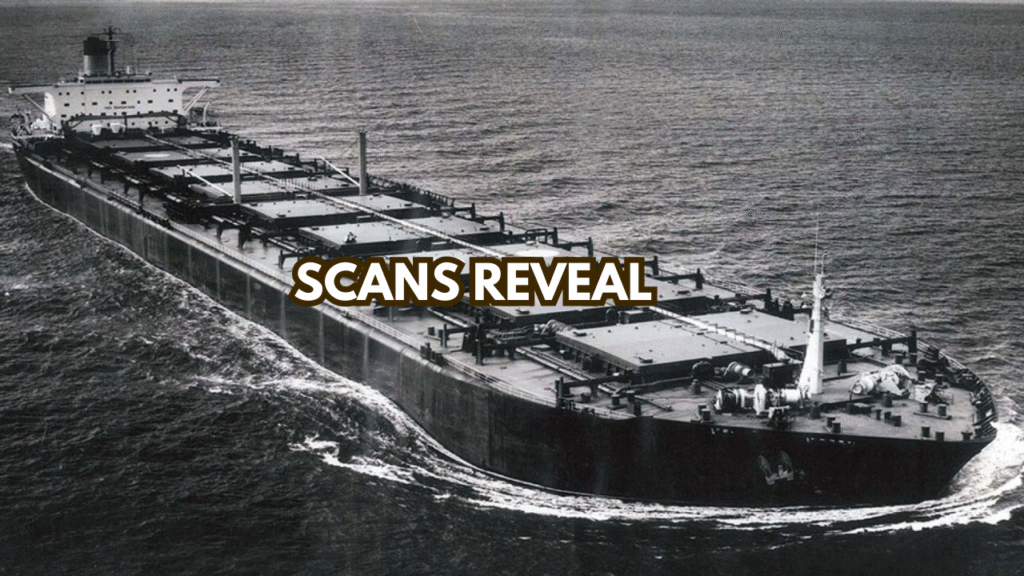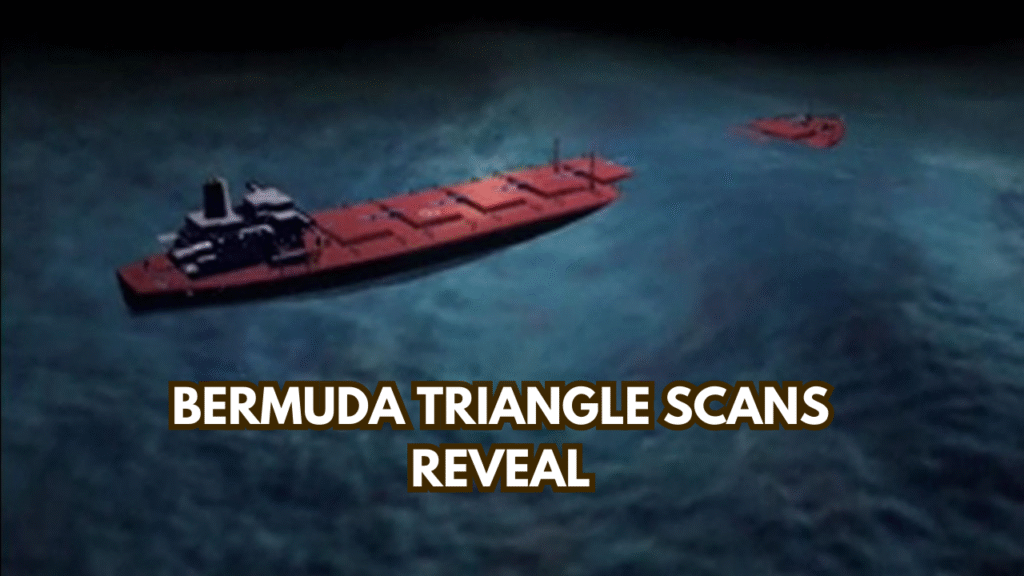On the dark night of September 9, 1980, a massive cargo ship MV Derbyshire, was battling the waves of the Pacific Ocean. Larger than the Titanic and as tall as a 16-story building, the vessel was like a fortress of steel. But just a few hours later, it vanished without a trace. No radio signals, no floating debris—nothing. How could a ship weighing hundreds of thousands of tons disappear without leaving a single clue?

For the next 20 years, authorities gave only one explanation: “The ship sank.” But when the father of a crew member began to uncover the truth, what he found hidden beneath the sea shocked the world.
A Routine Voyage Turned Nightmare
On the evening of September 9, 1980, a giant cargo ship, the MV Derbyshire, was slicing through the deep waves of the Pacific Ocean, heading toward Japan. But at the same time, a powerful storm, Typhoon Orchid, was approaching from the east. The typhoon was growing more dangerous by the hour.
The Derbyshire had been sailing non-stop for eight weeks. It had picked up 150,000 tons of iron ore from a mine in Canada, crossed the Atlantic, passed the southern coast of Africa, and was now nearing its final destination. Onboard were 42 experienced crew members, including engineers, helpers, and technical experts—just hours away from completing their journey.
But fate had other plans.
Captain Underhill’s Final Call
Captain Geoffrey Underhill, a seasoned sailor with over 20 years of experience, was in command. His wife had already arrived in Japan, waiting to reunite with him. But sadly, that reunion would never happen.
Trusting the weather reports—as he had many times before—Captain Underhill believed the Derbyshire could withstand the storm. He reduced speed and slightly shifted the ship’s direction to face the waves, a standard maneuver to maintain stability. He also sent an emergency message, warning of worsening conditions and sharing the ship’s current location.
But the typhoon intensified rapidly. Waves rose over 10 meters high, some reaching the length of the ship itself. With a length of 1,000 feet, taller and wider than the Titanic, the Derbyshire was not just any ship—it was a state-of-the-art steel fortress, designed to survive the world’s most dangerous oceans.
Yet, something unthinkable was about to unfold beneath the dark sea.

The Vanishing
That same night, two other ships were caught in the typhoon—but both survived and made it to port. The Derbyshire, however, disappeared without a trace.
No distress call. No final message.
For six days, there was nothing but terrifying silence. Even the ship’s owners didn’t immediately report it missing—perhaps believing it had simply lost radio contact and would show up soon.
But as the days passed and no sign of the ship emerged, worry turned to dread. On September 15, an international search mission began, involving helicopters, airplanes, and naval ships, all scouring the ocean where the ship was last seen.
Nothing.
Not a single piece of wreckage from the massive vessel was found.
After six days, the search was called off. Authorities concluded—without any investigation—that the ocean had simply swallowed it.
A Father’s Mission for the Truth
News coverage disappeared as quickly as the investigation. Families of the lost crew sent countless requests for answers but were told there was nothing to investigate. But Peter Reddyard, whose son had been onboard, was not satisfied.
Peter wasn’t just a grieving father—he was a highly experienced ship surveyor, and he started digging. What he discovered was deeply disturbing.
Just 18 months later, in 1982, another Bridge-class ship called the Tyne Bridge was damaged during a storm in the North Sea. Cracks began forming in the steel near the superstructure. Fortunately, the captain evacuated the crew just in time, and the ship was saved.
Peter investigated and found serious structural flaws—not just in that ship, but in all six Bridge-class ships. All had cracks in the same locations. Worse, repairs were being carried out secretly, and many ships had not been built exactly as per the original designs.
Peter had found the smoking gun.
A Cover-Up Exposed
Despite sending all the evidence to the Department of Transportation, officials dismissed it, claiming no new investigation was necessary. But the families of the crew refused to stay silent. In 1984, they formed the Derbyshire Family Association with one goal: expose the truth.
In 1986, another Bridge-class ship—Kowloon Bridge—sank due to cracks in its hull. This time, the British government reopened the case.
Peter and the families had hope again.
But the new investigation ignored Peter’s direct evidence of structural failure. The official report stated that there was no design flaw and that the ship had simply been overpowered by the sea.
The families were devastated. But they refused to give up.

14 Years Later—The Truth Found Under the Sea
In 1994, with help from the International Transport Workers’ Federation, the families launched a privately funded mission to find the MV Derbyshire. Incredibly, within 23 hours, the wreck was found four kilometers below the Pacific Ocean surface.
Over the next six years, detailed photos and analysis revealed the truth.
The door of a small storage area at the front of the ship—called the bosun store—had not been built to original design specifications. During the storm, it broke open, and water flooded in. This added weight forced the front of the ship underwater, causing more waves to crash over it. As a result, the ventilators broke, allowing water into the engine room.
Then the hatch covers—which weren’t up to standard—gave way, flooding the ship’s cargo containers one by one. Eventually, the entire steel fortress sank silently into the Pacific depths.
The investigation proved that small design compromises and cost-cutting—not a major design flaw—had doomed the Derbyshire.
A Legacy That Changed the Industry
In the 1970s, ships sank frequently—and authorities treated it as part of the business. But the families of the Derbyshire, through their determination and private efforts, exposed serious flaws in the shipping industry.
As a result, safety rules changed, new ship designs were implemented, and inspections became stricter. They didn’t just find a missing ship—they forced an entire industry to change.
To this day, many modern shipping safety standards exist because of the MV Derbyshire—which still rests 4 kilometers beneath the Pacific Ocean, silent but not forgotten.



